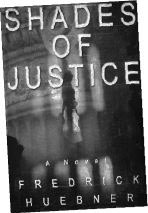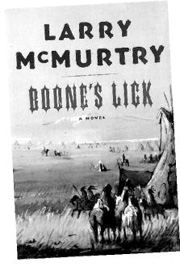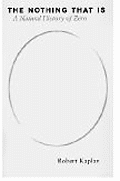SHADES OF JUSTICE
by Fredrick Huebner (Simon & Schuster, $24) Third Place Books, 17171 Bothell Way N.E., 366-3333; 6 p.m. Fri., Aug. 3
ADHERING TO traditional fiction- writing wisdom, Seattle attorney/author Fredrick Huebner has always concocted stories around what he knows best—lawyers, courtroom strategizing, the malevolence and misjudgments that cause people to spend the greater part of their lives behind bars. And that wisdom has served him well. His first novel, Judgment by Fire (1988), was nominated for a prestigious Edgar Award, and the four that followed, including his last, Methods of Execution (1994), were mostly favorably reviewed.
But Shades of Justice finds Huebner tackling a broader range of subjects—including depression and subsequent treatment—with which he also admits to having had “personal experience.” The novel’s plot concerns a forensic psychiatrist struggling to win the release of a childhood friend and nationally renowned painter, who may have slain her husband and tried to commit suicide while in the grip of a past psychological trauma. It’s a tale that raises intriguing ethical questions and should also raise Huebner’s standing as a novelist capable of adding heartfelt human dimension to lofty legal issues.
When we first encounter Dr. Will Hatton, a “leading skeptic of post-traumatic stress disorder and repressed-memory claims,” he’s in Dallas, testifying against an oil man who claims that Vietnam War flashbacks drove him to assassinate his family. But Hatton is soon called back to his native Puget Sound by his mentor and substitute father, lawyer Edwin Hauser. Seems that artist Laura Arcand, her wrists bleeding from cuts inflicted by her own wedding ring, was found unconscious on a Bainbridge Island beach beside the naked and gunshot corpse of her husband, Mark Talbot. Laura doesn’t recall plugging Talbot, but her delirious outburst shortly after being rushed to a hospital—”I killed them! Oh, God, both of them!”—certainly weighs heavily against her with Kitsap County’s right-wing prosecutor. It’s up to Hauser and his sexy shark of a co-counsel, Mary Slattery, to answer vital questions surrounding this current homicide (where, for instance, is the murder weapon? And why did Laura allude to having killed two people?), while Hatton digs for the deep psychological roots of the painter’s behavior, hoping to justify an insanity plea.
WHAT HE FINDS is a 25-year-old mystery, involving an assault on Laura at the same beach where her husband would eventually die. Taking a cue from the late Ross Macdonald (who, not surprisingly, is one of Huebner’s favorite crime novelists), the modern murder in Shades relates to Laura’s previous attack and can only be solved by exposing the details of that incident. Hatton hopes to do just that. Mary Slattery points out early in this yarn that his involvement in Laura’s case is problematic: He and the artist were once lovers, and his close relationship with Edwin Hauser—who just happens to be the current boyfriend of Laura’s mother, who in turn was Mark Talbot’s business partner (got all that?)—hardly makes Hatton the most objective psychiatrist around. Yet he launches an investigation that will lead him to accuse Laura’s latest therapist of malpractice, leave the defense team wondering why Talbot seems so obsessed with the attack on Laura a quarter-century ago, and, not incidentally, cost Hatton his trust in some of the people he thinks he knows best.
Huebner does an exceptional job of building a credible insanity defense for his client and then tearing it down in favor of another, far more complex resolution to her case. He is also to be commended for his nuanced portrayal of Laura, whose artistic talents are so buttressed by her emotional fragility. Shades of Justice is not without flaws, however. Hatton only has two gears—arrogant or exhausted—and for all her impact on this story, Mary Slattery is barely fleshed out enough to fill her C-cups. It will take just over half the book for an astute reader to discern the essentials of that long-ago attack on Laura, and the same reader will likely be disappointed at how quickly Huebner allows the troubled artist to recover after the jagged pieces of this puzzle are fit together in the denouement. But these weaknesses shouldn’t detract from Huebner’s efforts. Even at a time when mysteries concerning repressed memories threaten to become a subgenre, Shades of Justice stands out as unusually well crafted, promising still better crime dramas from Huebner in the future.








